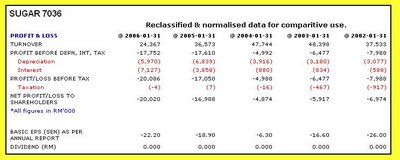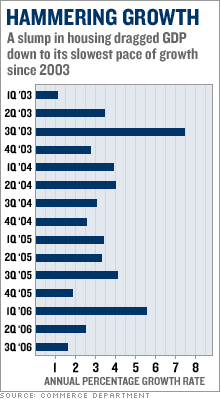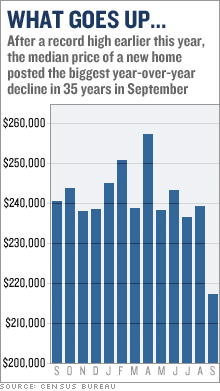Reading Warren Buffett's Letters on the issue of the professional money managers reminded me of the series of articles written in 2004 by one Mr.Henry Blodget. Oh yeah, that bugger Henry Blodget, that bugger that made that amazing Amazon BUY call from US150.00 to US400.00 a share in Dec 1998.
Anyway, I thought it would do me good to re-read some of the stuff Blodget wrote when he was asked to post at the Slate website in 2004, during the trial of one Martha Stewart.
Here is some interesting stuff written in Part IV
- And this isn't even the real problem. The real problem is that, in any stock-picking effort, you and your adviser will be competing with thousands upon thousands of full-time professionals engaged in nothing but trying to find and exploit tiny information advantages that other full-time professionals miss. These full-time professionals are smart, nimble, experienced, well-trained, well-equipped, and deeply plugged in, so much so that they often finish exploiting valuable information before you (or CNBC) even know it exists (and, even so, most of the pros still can't beat the market!). To beat the market, you have to capitalize on other investors' mistakes, and, in this effort, no matter how alert and dedicated your adviser is, the two of you will be at a major disadvantage.
- So what are financial advisers good for? The best ones, in my opinion, will do less, not more. They will be decent, trustworthy people you feel comfortable with. They will help you allocate your assets appropriately and keep your costs low—a strategy that will usually generate less compensation for the advisers but higher returns for you.
In Smart? Skillful? Probably Just Lucky
- Because stocks and markets can only go up or down, analysts, strategists, and investors often have at least 50-50 odds of being "right." (The odds that any specific stock will rise are likely worse than those for the S&P 500, but on average, they are probably still close to 50-50.) Fifty-fifty odds are pretty good odds—better than any you'll find in Las Vegas, for example (and it is worth noting that ubiquitous awareness of this doesn't stop millions from jetting to the desert and gleefully throwing money away). Because the stock market is not random, moreover, but loosely tracks the growth of profits and dividends, forecasters who predict the market is going to rise have better than 50-50 odds (over time, profits and dividends usually increase). Here's the catch, though. Human psychology being what it is, stock forecasters—and those who evaluate them—almost never factor these odds into their assessments of the forecasters' skills. (In 1998, when I suggested that Amazon's stock might eventually hit $400 a share, some media observers reacted with first shock and then adulation, as though the odds against this were 1,000-to-1; given the conditions at the time, I thought they were better than even). Similarly, those who buy stocks and make money almost never realize that a monkey should win about 50 percent of the time. Instead, they congratulate themselves on their acumen—they were right!—and double down. In a bull market, when the odds that the market, at least, will rise are even better than 2-in-3 (from 1982 to 1999, the S&P 500 rose 15 out of 18 years, or 83 percent of the time), most people forget their "mistakes" and increasingly come to believe that the next investing best seller should be titled George Soros, Warren Buffett, and Me.
- This is not to say that all investing success is luck—it isn't. Some people are better than average, and, over time, some of them will generate superior returns. (According to John Bogle's Common Sense on Mutual Funds, approximately one in six mutual fund managers has enough skill to consistently beat the market after costs—1 in 6.) This skill, however, has little to do with the simplistic price predictions that dominate most market discourse. It stems from discipline, patience, experience, and methodologies that lead to a rare ability to determine when the odds are distinctly good or bad. Skilled investors aren't immune from losses—far from it. They are just talented enough that eventually, gradually, their skill allows them to win.
And in another more shocking piece, Blodget writes What Stock Analysts Are Good For
- If this is so, then what the heck are stock analysts for? Why are thousands of analysts being paid zillions of dollars to do work that, on average, apparently isn't worth the cost of the chairs the analysts sit on?
The answer is complex. First, it turns out that stock analysts are valuable—sometimes very valuable—but not in the way that most of the public and financial press think. Specifically, casual observers view analysts simply as "stock-pickers," when stock-picking is often one of the least helpful services they provide. An analyst's goal is to help investors make decisions, a mission that encompasses not only rating stocks, but also providing industry expertise, trend-spotting, evaluating scuttlebutt and gossip, interviewing management and customers, and shaping mountains of raw data into coherent projections - Which brings us back to the original question: If, despite all these efforts, the market is so hard to beat, why have analysts at all? The simple answer—a tautological one—is that as long as there are investors who try to beat the market, there will be analysts who, one way or another, try to help them. The more profound answer is that one of the reasons the market is so hard to beat, even for professionals, is that, in aggregate, analysts and investors are good at what they do (evaluating, distributing, wringing the profit out of every piece of information). After an 18-year bull market, of course, the number of analysts has ballooned beyond what is needed to get the job done—the world probably doesn't need 24 analysts covering Microsoft, for example—but Wall Street is nothing if not laser-focused on the bottom line. Over time, if the market stays stagnant, many analysts will eventually be exploring other professions. But there will always be Wall Street jobs for the best of them.
And in The Trouble With CNBC and Smart Money and …
- The sad truth is that sound investment policy is boring. Diversify, reduce costs, aim to earn the market rate of return—even Stephen King would have trouble telling stories about that. But for the financial media to survive—at least the financial media devoted to helping you "profit" from reading/watching/listening—they have to suggest, over and over again, that there are exciting new places to put your money or dangerous places to remove it from. They have to tantalize you with the latest, greatest mutual funds or the "Ten Hot Stocks for 2005." They have to make you drool by observing, again and again, that every dollar invested in Microsoft's IPO in 1986 would be worth about $300 today. (Next time, it will be you!) They have to enumerate new ways to refinance your house, consolidate your debt, track your investments, pick better stocks, beat the pros, buy treasuries, retire rich, or make millions. They have to keep you watching, listening, and reading, or else they—not you, they—will go bankrupt.
Unfortunately, the underlying message of such commentary—Do something!—is often hazardous. Once you have gotten the investing basics right, you should do almost nothing. Every time you make a change, you incur costs—transaction costs, tax costs, psychological costs, and opportunity costs. You also, in many cases, decrease your odds of success. The least predictable investment decisions are those focused on the short term (months and years). The most predictable, meanwhile, are those focused on the long term (decades). To the media, of course, the long term is death. How often will you pay or tune in to be told that you shouldn't do anything, that nothing has changed? Answer? Never. So the media must find other ways to keep you entertained.
And in Born Suckers , Blodget states the following!!!!!
- This self-defense guide would not be complete if I did not address the greatest Wall Street danger of all: you.
Human beings, it turns out, are wired to make dumb investing mistakes. What's more, we are wired not to learn from them, but to make them again and again. If there is consolation, it is that it's not our fault. We are born suckers.
Self-attribution Bias: We attribute our successes to ourselves, and we blame our losses on others or bad luck. This hobbles us in two ways. First, we don't learn from our mistakes because we don't see them as mistakes. Second, we assume we are skilled or smart when we're just lucky.
The Gambler's Fallacy: We tend to believe, incorrectly, that if a flipped coin has come up heads three times in a row it is more likely come up tails next time. Similarly, just because a stock or market has gone up or down for a while doesn't mean it is more likely to go the other way soon.
Prospect Theory: We have an irrational tendency to sell our winners to lock in profits and keep our losers to avoid taking losses. This causes us to sell too early when the market is going up and too late when it is going down. We also feel the pain of loss more than the pleasure of gain and, therefore, blow out losing positions in panic when we should just hang on.
Conservatism Bias and Confirmatory Bias: Once we form opinions, we tend to overvalue information that reinforces them and undervalue information that undermines them (conservatism bias). We even tend to seek out supporting information (confirmatory bias). Thus, we irrationally cling to incorrect conclusions, and, to paraphrase Simon and Garfunkel, hear what we want to hear and disregard the rest.
Overoptimism: We tend to be overoptimistic and overconfident. According to James Montier, when students are asked whether they will perform in the top half of their class, an average of 80 percent say yes. This tendency makes it easier for part-time hobbyists to dismiss a century's worth of academic research showing that only a tiny fraction of full-time professionals can beat the market.
Outcome Bias: We tend to evaluate decisions based on outcomes instead of probabilities. Thus, we congratulate ourselves for stupid choices that happen to turn out well and vow to never again make smart choices that happen to turn out badly. Our errors get reinforced, and our wise decisions rejected.
Buffett's "Rearview Mirror": We base our expectations for the future on what has happened in the recent past. Thus, we are most bullish at the end of long bull markets, when we should be most bearish, and most bearish at the end of long bear markets, when we should be most bullish.
Hindsight Bias: When we reflect on the past, we imagine that we knew what was going to happen when we didn't. As James Montier puts it, "You didn't know it all along, you just think you did." This allows us to imagine, for example, that we knew that the tech boom of the late '90s was a bubble and that everyone who suggested otherwise was an idiot or crook. It also makes us overconfident about our ability to predict what will happen next.
Here is the link to the archives of what Blodget has written

















